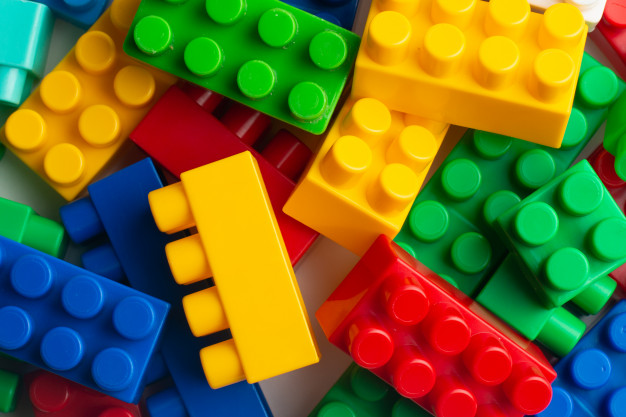Ever wondered what good a couple of eight-stud Lego® bricks can do? A lot more than you can think! To begin, six eight-stud Legos® can create more than 915 million different combinations. It means that there are millions of opportunities for your child to learn.
According to UNICEF, play is a crucial element in your child’s development, providing essential literacy and numeracy skills in their early years. Play is meaningful, joyful, actively engaging, iterative, and socially interactive.
While growing up, Lego® plays a vital part in improving children’s ability to learn science, technology, English, and math. This blog talks about 10 ways in which teachers can use Lego® for STEM education.
Science
Physics
Install small magnets under Lego® bricks and demonstrate attraction and repulsion between magnets. Teachers can also attach these bricks to helium balloons and let them fly and fall to teach laws of gravity.
Biology
Make habitats for different animals using various sized Lego® bricks to teach children about biodiversity.
Chemistry
Teachers can make models of atoms, molecules, elements, compounds and mixtures by using different colored bricks. It can strengthen the child’s concepts and help them understand the difference between them all.
Technology
Construction
Try to recreate famous architectural monuments and teach students how the original buildings were created. It will help children learn the basics of architecture. You may want to try this with the Lego® Architecture set.
Teachers can also challenge their students to build the strongest bridge, the highest tower, or an earthquake-proof building to test what they’ve learned.

Machines
Children can be challenged to design, for example, cars that can carry eggs safely over a distance. Students can have a competition at the end of the challenge to declare a winner.
EnglishLetters
Create different letters using Lego® brick. Teachers may use different colors to differentiate capital and small letters.
Words
Teachers can write letters on Lego® bricks and ask students to string your letters into words and tell their meanings. It will also help children in developing fine motor skills.
Write different words on Lego® bricks and test the student’s vocabulary. The more words they recognize, the taller their tower grows.
MathCounting
Ask students to count the number of bricks in an area.
Teachers can also ask students to count the number of studs of different-sized bricks and ask which brick has the highest number of studs. Students older than pre-school can also be challenged to arrange the bricks in ascending or descending order.

Calculation
Children can practice adding bricks and find the total.
For advanced students, teachers can ask to find a connection between 4×2 brick with 8 studs and an 8×6 plate with 48 studs and strengthen their multiplication skills.
Geometry
The teacher can add a line of small Lego® bricks down the center of a baseplate and ask children to replicate the pattern on both sides.
Looking for Opportunities?
Imagine how successful your children would be if they could benefit from the enrichment programs for children I.e. STEM learning. COMPUCHILD offers various children education franchise opportunities aimed at improving children’s education in the US and Canada. Get in touch with us today.


